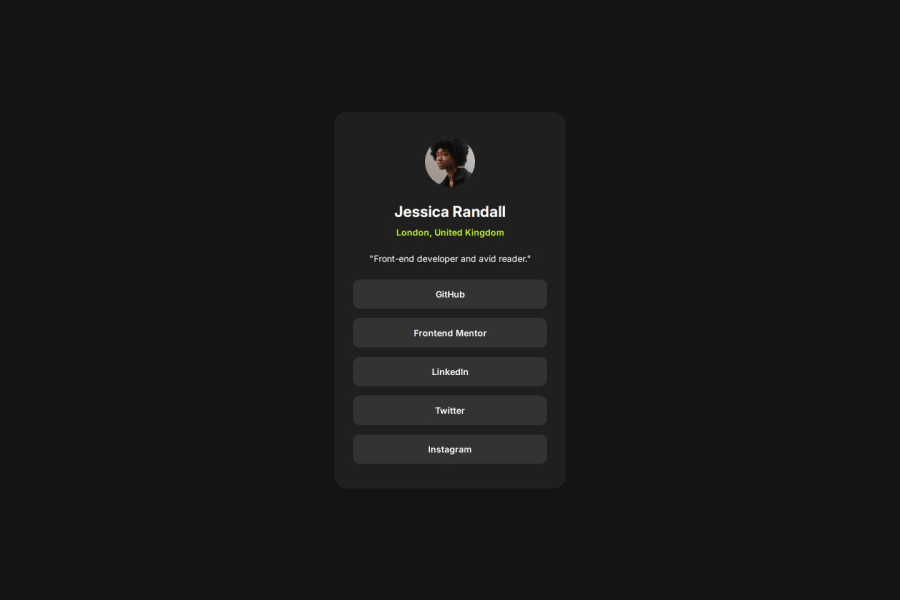
Social Links Profile Page - CSS Flexbox (Semantic HTML)
Design comparison
Solution retrospective
I received feedback from a person on my last challenge (blog preview card) to look into Semantic HTML.
I read through the documentation that was given to me and I implemented the changes I was reading. The HTML code looks a lot cleaner and is easier to follow.
What challenges did you encounter, and how did you overcome them?Didn't encounter any challenges with the challenge, it was more on properly applying Semantic HTML.
What specific areas of your project would you like help with?I am really looking to improve my Semantic HTML, please provide feedback.
Provide any other feedback and I will take it into consideration, thanks!
Community feedback
- @AdrianoEscarabotePosted 5 months ago
Hi Michaeldremy, how’s everything? I think your project turned out great! However, I have some feedback that I think might be useful:
To improve the semantics and accessibility of your code, consider using the
<ul>(unordered list) element to group related links. The<ul>tag is ideal for representing collections, such as a list of social media links or navigation items.Using
<ul>not only makes your code more structured and meaningful, but it also helps assistive technologies identify the group as a related set of items, enhancing the experience for screen reader users. Additionally, this approach improves overall readability and maintainability of your HTML.Example:
<ul> <li><a href="#">GitHub</a></li> <li><a href="#">Frontend Mentor</a></li> <li><a href="#">LinkedIn</a></li> <li><a href="#">Twitter</a></li> <li><a href="#">Instagram</a></li> </ul>In this example:
- The <ul> wraps the entire group, indicating that these links are related.
- Each item is enclosed in a <li> (list item), which provides a clear structure and logical grouping.
This method is particularly useful for navigation menus, social media links, or any set of grouped items, offering better support for both SEO and screen readers.
Pro Tip: Avoid using
<div>elements alone for lists, as they don’t convey the same semantic meaning. Whenever possible, choose semantic tags like<ul>or<ol>to improve the quality of your code.The rest is amazing.
I hope this is helpful. 👍
Marked as helpful1 - @workdotnishaPosted 5 months ago
Great job on the code! It's clean and organized. A few quick suggestions:
Hover Effect: Add a transition: all 0.3s ease; for smoother interactions on hover.
Units: Using em or rem instead of px for widths, paddings, and font sizes can make your design more responsive.
Happy coding! 😊
Marked as helpful1
Please log in to post a comment
Log in with GitHubJoin our Discord community
Join thousands of Frontend Mentor community members taking the challenges, sharing resources, helping each other, and chatting about all things front-end!
Join our Discord
